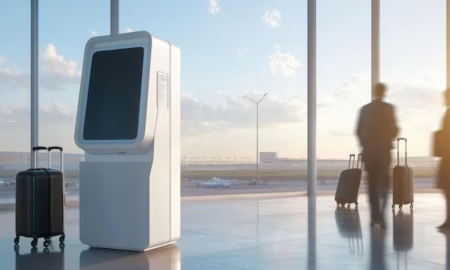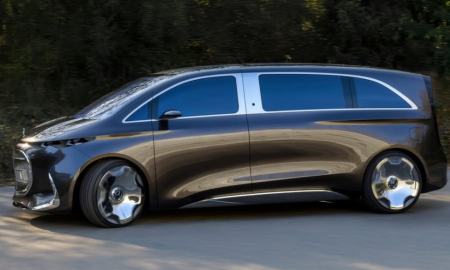
The Rapid Growth of the Lifestyle Sector

Over the past decade, the lifestyle sector has seen incredible growth. From wellness and health to fashion and travel, the industry has expanded tremendously to cater to the needs and wants of consumers interested in lifestyle products. It is a broad category with no specific definition. Still, the term is generally used to describe a range of products and services designed to make life more comfortable, efficient, and enjoyable.
Pixabay/ Pexels | The Influence of Social media is being used in ways that shape politics, business, world culture, education, careers, innovation, and more
The Rise of E-Commerce and Social Media
One of the biggest contributors to the growth of the lifestyle sector has been the rise of e-commerce and social media. Online shopping and social media have completely transformed how people shop and interact with brands. Thanks to e-commerce platforms like Amazon and social media platforms like Instagram, consumers now have direct access to lifestyle products and services that they may not have discovered otherwise. With just a few clicks, consumers can purchase products or services they need or want, and businesses can reach a broader audience without needing a physical location.
The Impact of the Changing Demographics
Another factor contributing to the growth of the lifestyle sector is the changing demographics of consumers. Millennials and Generation Z are the driving force behind this growth. These consumers focus more on wellness, sustainability, and personal experiences than previous generations. They are more interested in self-care and lifestyle products that support their health and well-being. As a result, industry players need to incorporate these needs into their products and services to stay relevant and competitive.

Pixabay/ Pexels | Today, companies dealing with lifestyle products enjoy digital technology’s fantastic benefits
The Development of New Technologies
Technology has played an essential role in driving the growth of the lifestyle sector. Product innovation has allowed for more efficient and personalized experiences for consumers. For instance, wearable technology has become increasingly popular in the wellness industry. Smartwatches, activity trackers, and other wearable devices enable consumers to track their fitness goals, heart rates, and more. In addition, virtual and augmented reality provide consumers with interactive experiences and allow them to try products before purchasing.
The Different Sub-Sectors Driving Growth
The lifestyle sector is vast, and various sub-sectors have fueled growth. Wellness and health have significantly contributed to the industry’s growth, with fitness, nutrition, and beauty products leading the way. Luxury and adventure travel is gaining popularity in the travel industry as consumers seek unique experiences that cater to their interests and preferences. Fashion and home decor have also grown, with consumers looking to express their individuality through style and design.

Pixabay/ Pexels | The lifestyle sector shapes the environment in which people live, work, and play
Conclusion
The growth of the lifestyle sector shows no signs of slowing down. As consumers prioritize wellness, sustainability, and lifestyle personalization, the industry must keep up with these changes. By embracing new technologies, catering to evolving demographics, and innovating new products and services, businesses in the industry will thrive. Whether through fashion, travel, wellness, or other aspects of our lives, the lifestyle industry will continue to shape how we live and interact with the world around us.
More in Luxury & Life Style
-
`
What’s Changing for Student Loans After Trump’s New Spending Bill?
The passing of President Donald Trump’s latest spending bill is shaking up more than just tax brackets and business deductions—it’s poised...
July 16, 2025 -
`
Why Big Tech Is Divided on the Future of Artificial General Intelligence
Fifteen years ago, the founders of DeepMind—Sir Demis Hassabis, Mustafa Suleyman, and Shane Legg—set a bold goal: “Build the world’s first...
July 1, 2025 -
`
Planning a Wedding? These Money-Saving Tips Actually Work
Weddings are meant to be memorable, not financially draining. But for many couples, the cost of tying the knot often brings...
June 24, 2025 -
`
Did MrBeast Really Borrow Money From His Mother for His Wedding?
YouTube star Jimmy Donaldson, widely known as MrBeast, sparked surprise when he shared a personal update on X. Despite leading the...
June 17, 2025 -
`
How Smart Technology Is Changing the Way We Travel
Technology has reshaped nearly every part of modern life, and travel is no exception. From how we plan trips to how...
June 12, 2025 -
`
Why Some Tech CEOs Are Replacing Themselves With AI Avatars
In a move that signals a shift in how corporate communication is handled, major tech CEOs are beginning to hand the...
June 3, 2025 -
`
Is Innovation Dead in American Pop Culture?
Has something changed in the way we engage with American pop culture? Scroll through your favorite streaming service, tune into the...
May 27, 2025 -
`
7 Key Steps to Start a Profitable Digital Products Business
Starting a digital products business offers an exciting opportunity to turn your skills and knowledge into a revenue-generating venture. Whether you’re...
May 20, 2025 -
`
Mercedes-Benz Introduces the Vision V – An Ultra-Luxury Electric Limousine
The introduction of Mercedes-Benz’s Vision V concept represents a significant advancement in the field of electric vehicles. This electric minivan is...
May 13, 2025














You must be logged in to post a comment Login